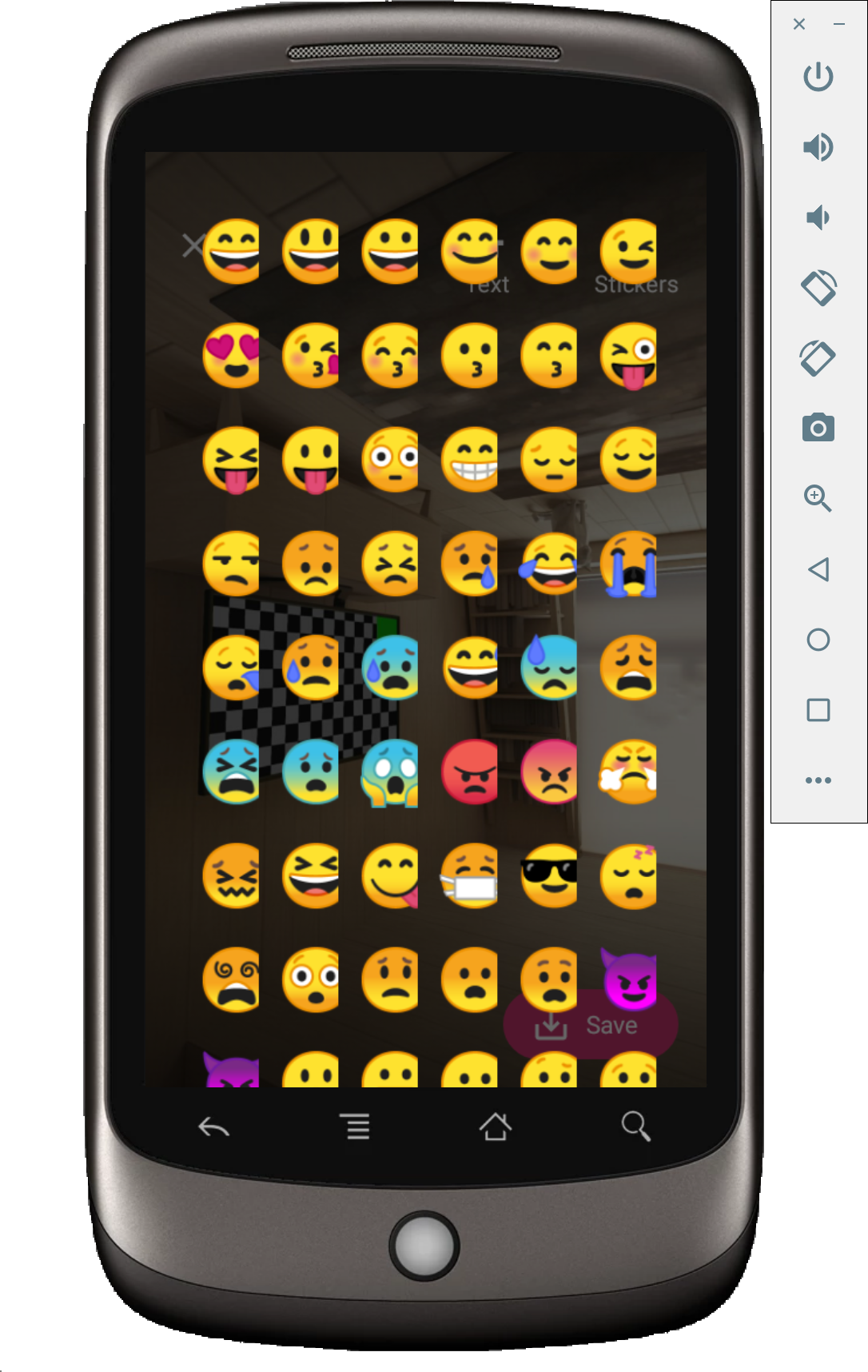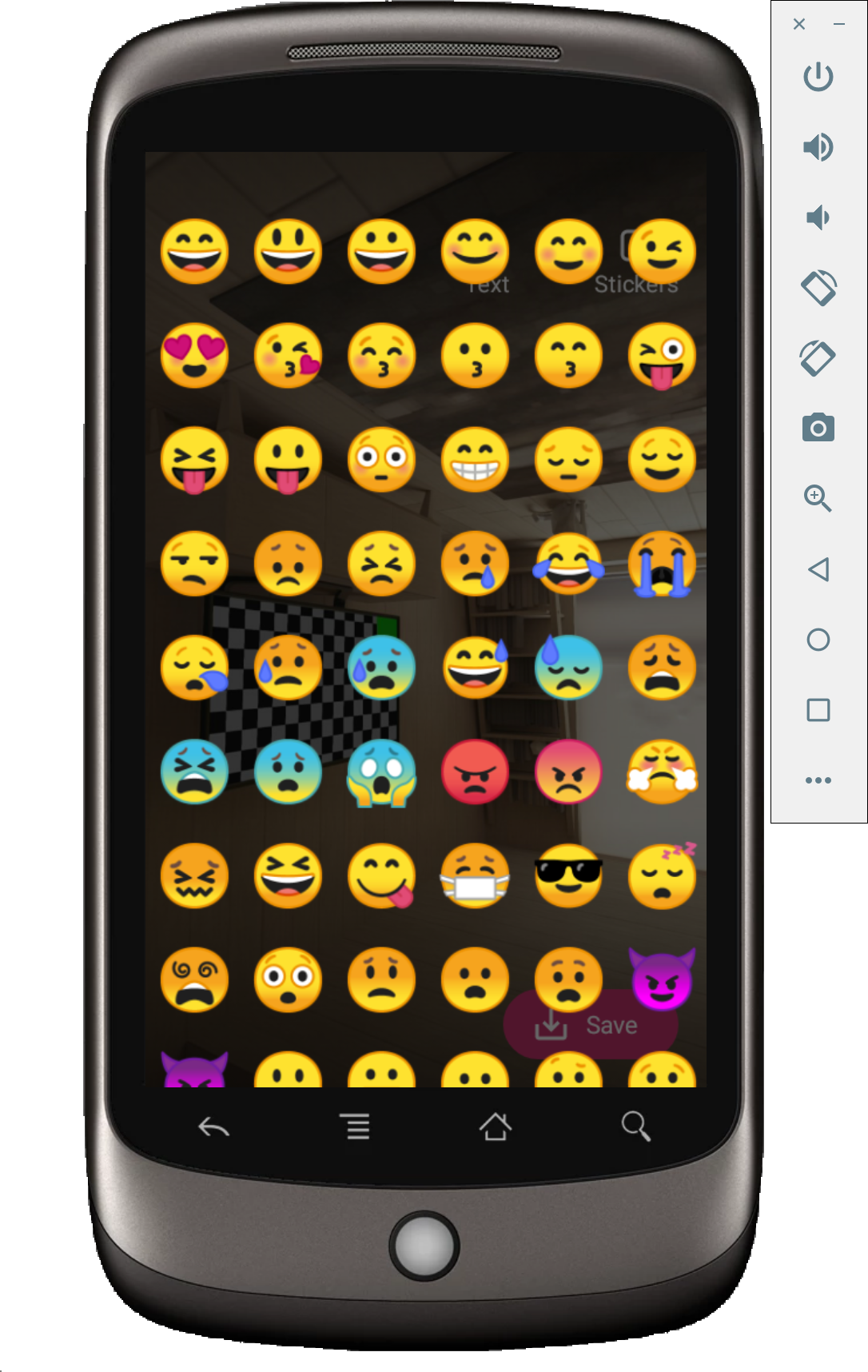-
Notifications
You must be signed in to change notification settings - Fork 6
New issue
Have a question about this project? Sign up for a free GitHub account to open an issue and contact its maintainers and the community.
By clicking “Sign up for GitHub”, you agree to our terms of service and privacy statement. We’ll occasionally send you account related emails.
Already on GitHub? Sign in to your account
EmojiPicker: autosize #199
Conversation
|
You can test the changes on this Pull Request by downloading the APK here. |
… use of app:autoSizeTextType=uniform for automatic font resizing
…atically with autoSizeTextType='uniform'
|
This one is ready for review now @aforcier 🙇 |
There was a problem hiding this comment.
Choose a reason for hiding this comment
The reason will be displayed to describe this comment to others. Learn more.
Looks good @mzorz!
- Always looks right as you shift column numbers
- Emoji representation is the same (verified it all changes when you revert the emoji compat usage)
Tested on:
- Pixel 3 API29
- Pixel 5X API23 (emulator)
- Nexus One API22 (emulator)
Just a couple minor code suggestions and this is good to go.
| EmojiCompat.get().unregisterInitCallback(this) | ||
|
|
||
| val regularTextView = holder.txtEmojiRef | ||
| if (regularTextView != null) { |
There was a problem hiding this comment.
Choose a reason for hiding this comment
The reason will be displayed to describe this comment to others. Learn more.
Unnecessary null check here - regularTextView is non-null.
There was a problem hiding this comment.
Choose a reason for hiding this comment
The reason will be displayed to describe this comment to others. Learn more.
👍 addressed in 78ffcf3
| @@ -71,11 +93,36 @@ class EmojiPickerFragment : BottomSheetDialogFragment() { | |||
| inner class EmojiAdapter(internal val emojiList: List<String>) : RecyclerView.Adapter<EmojiAdapter.ViewHolder>() { | |||
| override fun onCreateViewHolder(parent: ViewGroup, viewType: Int): ViewHolder { | |||
| val view = LayoutInflater.from(parent.context).inflate(R.layout.row_emoji, parent, false) | |||
| emojiViewWidth?.let { | |||
| val params = view.getLayoutParams() | |||
There was a problem hiding this comment.
Choose a reason for hiding this comment
The reason will be displayed to describe this comment to others. Learn more.
Can use property access syntax here and silence an IDE warning:
val params = view.layoutParamsThere was a problem hiding this comment.
Choose a reason for hiding this comment
The reason will be displayed to describe this comment to others. Learn more.
👍 ba15ab1
| // Changes the height and width to the specified dp | ||
| params.height = it | ||
| params.width = it | ||
| view.setLayoutParams(params) |
There was a problem hiding this comment.
Choose a reason for hiding this comment
The reason will be displayed to describe this comment to others. Learn more.
Same as above, can use property access syntax:
view.layoutParams = paramsThere was a problem hiding this comment.
Choose a reason for hiding this comment
The reason will be displayed to describe this comment to others. Learn more.
👍 done in ba15ab1
Fix #161
This PR has a couple of steps. First I cleaned out the layouts we were using. Then the actual diagnosis and proposed solutions come.
The previous implementation had many unneeded views that were set to
visibility:gonelong ago. Removed them and then just added the simplest form for both the dialog layout and therow_emojilayout.BEFORE
Nexus S emulator

AFTER
Nexus S emulator (API 22)

Then realized, if I add more columns to the grid, or if we set a
fontSizelarger than35sponemoji_row.xml's TextView, the problem appears again.Diagnosis
It has to do with the
fontSizeand the emoji span width.Setting a
fontSizesmaller than 35sp as is currently set to now (or even removing the parameter) avoids the cut, but obviously makes the emoji smaller.For this to work everywhere, we'd need to calculate on runtime and then adjust the
fontSize/ emoji picker column amount to give there enough space to avoid the TextViews to cut the span's view.I thought we could proxy this with a hardcoded table and make different sized screens show a different amount of columns depending on their informed width. I think this is probably a good proxy and doesn't hurt the UX while minimizing the effort (that is, it's a lightweight solution).
But then when looking closer into this, was reading the documentation to make sure I got all things in place, and stopped on this for a second:
I realized we're using
TextViewfor Text and emoji and, this essentially means... the user would be able to change the sizes on the fly, and this would modify our UI. Effectively tried this on bigger screens and the cut is observed there as well:So, that leaves us no choice but to take this into account and adjust the sizes on the fly accordingly.
Proposed solution
So, what we essentially need is a way to set a
fontSizefor which emoji spans size occupy only as much as their containing view's size (the TextView). In principle (and thankfully!), this is handled by AutoSizeable TextViews and should be backwards compatible with the support library.Unfortunately, and after a few tests I came to realize what we have in
row_emojiis the recently addedandroidx.emoji.widget.EmojiTextViewwhich is not anAutoSizeableTextView(see the following jetpack code that makes this check before applying the behavior):We can workaround that by making this view a regular
TextViewand processingEmojiSpanwith a callback, just the way we are doing things foraddEmojiin https://github.com/Automattic/portkey-android/pull/49/files#diff-1dfe56dc06fa5c09f0d3ac32efea40d9R375-R394Changed back to
TextViewin e6df0f3.Added
EmojiCompatprocessing on it in 21430d8.Also worth noting, we need to give the view a concrete size, given relativeindicators such as
wrap_content/match_parentdon't work when usingautoSizeTextType=uniform.But, if we give it a concrete size, then it may end up being too small for the default 6 columns.
For this, we're calculating the maximum width for each view depending on the columns needed, in 000e8c2.
To test
On API 26 or higher:
EmojiPickerFragment.kt):Repeat the same on pre-API 26 and verify the same behavior holds.
Also, check the emoji represented on API 22 are the same as in > API 26 (if you comment out the
EmojiCompatcode, you'll see the old emoji representations appear).